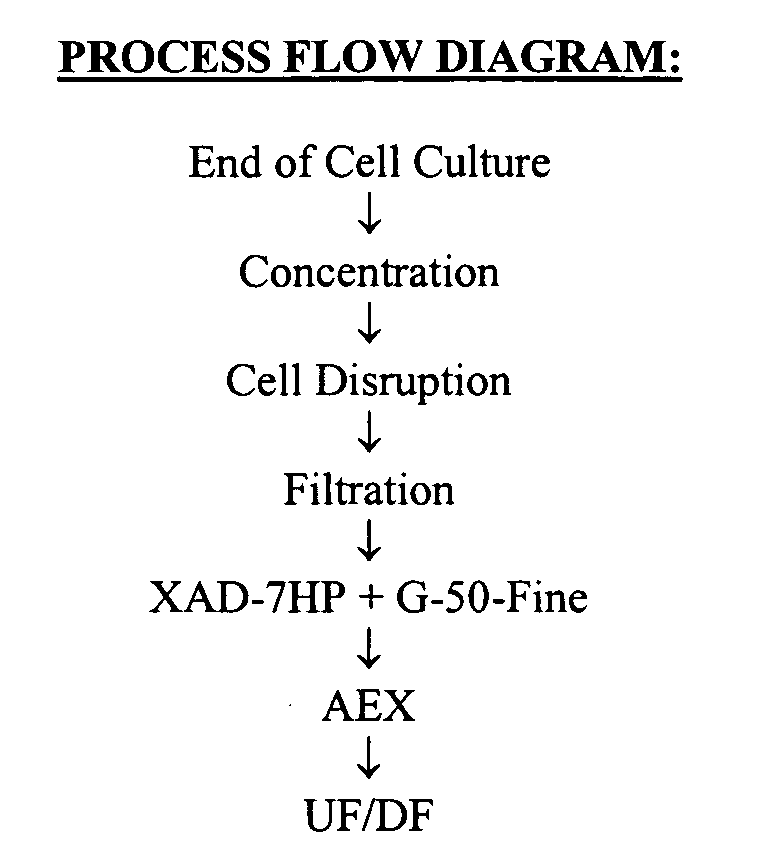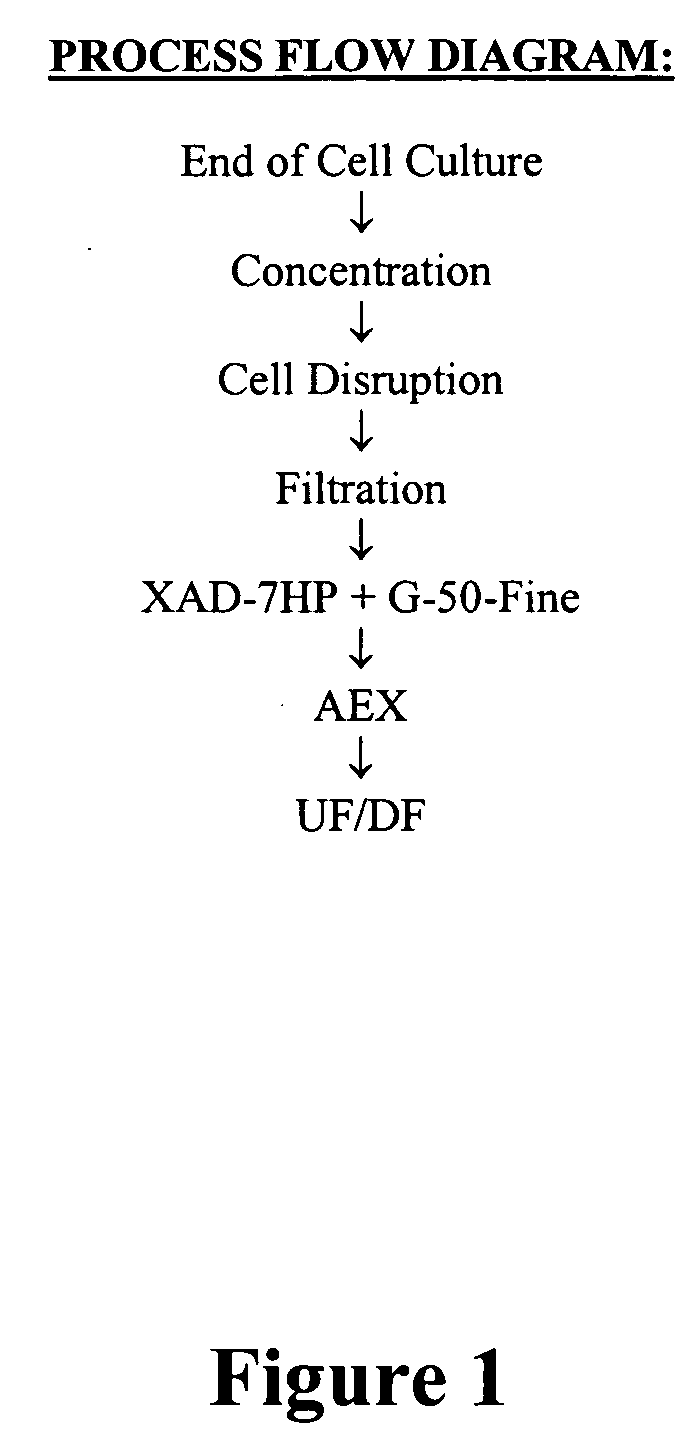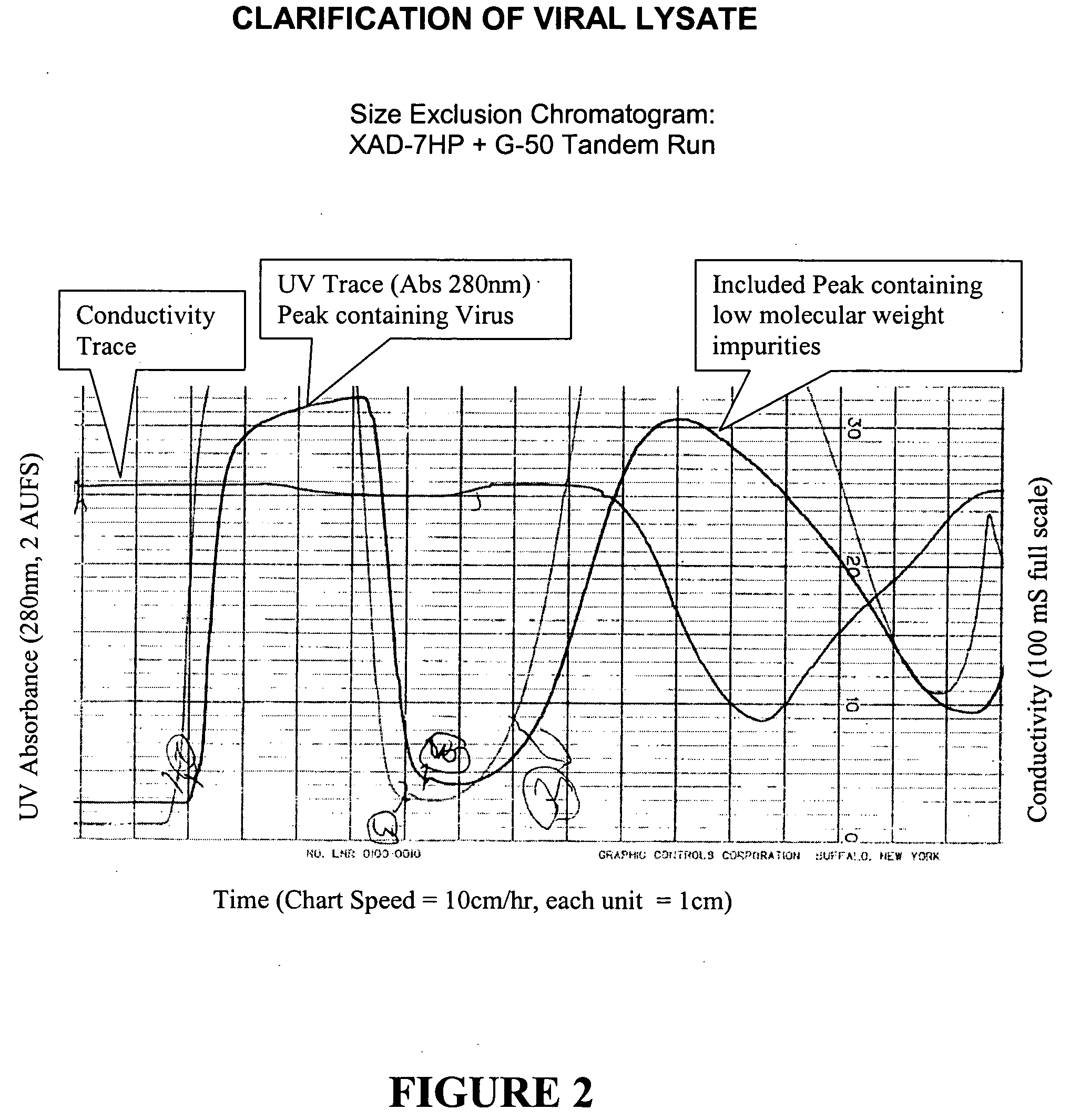Method for purifying virus
a virus and purification technology, applied in the field of virus purification, can solve the problems of insufficient methods of cultivating and purifying viruses on the laboratory research scale, insufficient for large-scale production that will be required, too expensive, time-consuming, etc., and achieve the effect of avoiding chromatography buffer conductivity adjustmen
- Summary
- Abstract
- Description
- Claims
- Application Information
AI Technical Summary
Benefits of technology
Problems solved by technology
Method used
Image
Examples
example 1
Purification Of Adenovirus
[0080] The general purification scheme is shown in FIG. 1. Virus was monitored at certain steps of the purification process described in this Example. The method consisted of measuring the virus concentration by AEX-HPLC, similar to that described in Huyghe, et al, Human Gene Therapy 6:1403-1416 (November 1995). In summary, a 1 ml Resource-Q column was equilibrated with a buffer containing 300 mM NaCl and 20 mM phosphate buffer, pH 7.5. A linear gradient from 300 mM to 600 mM NaCl was run to elute the virus and the UV absorbance was monitored at 260 and 300 nm. The area of the virus peak was integrated and compared to a cesium chloride purified reference standard.
Preparation of Cell Lysate
[0081] Hela-S3 cells, available from the American Type Culture Collection, Accession No. ATCC CCL-2.2, were infected with adenovirus, Onyx 411, as described by Johnson, et al., in: Cancer Cell. 2002 May; 1(4):325-37. A 70 liter cell culture harvest was concentrated abou...
PUM
 Login to View More
Login to View More Abstract
Description
Claims
Application Information
 Login to View More
Login to View More - R&D
- Intellectual Property
- Life Sciences
- Materials
- Tech Scout
- Unparalleled Data Quality
- Higher Quality Content
- 60% Fewer Hallucinations
Browse by: Latest US Patents, China's latest patents, Technical Efficacy Thesaurus, Application Domain, Technology Topic, Popular Technical Reports.
© 2025 PatSnap. All rights reserved.Legal|Privacy policy|Modern Slavery Act Transparency Statement|Sitemap|About US| Contact US: help@patsnap.com



